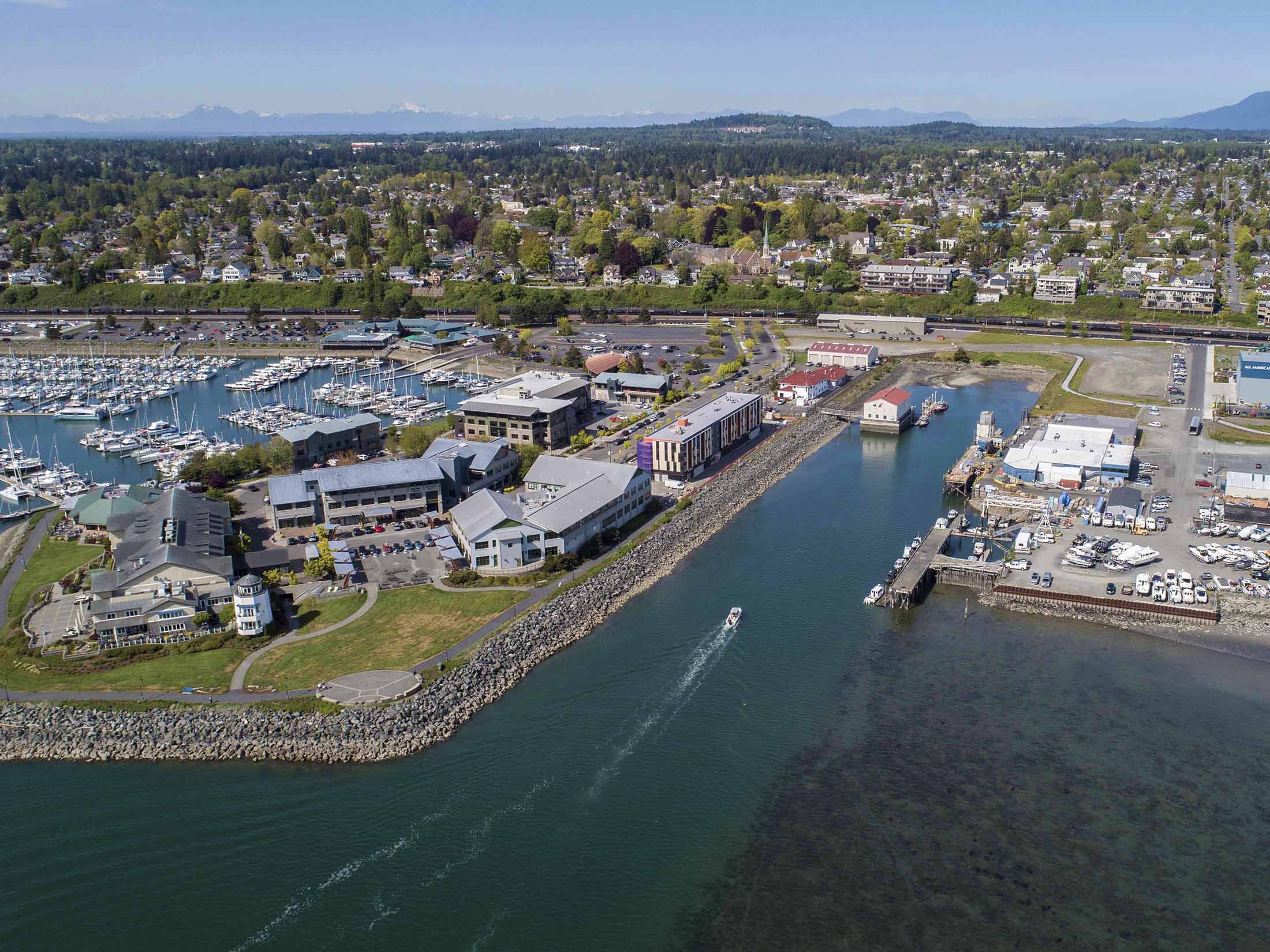
I & J Waterway on Bellingham Waterfront, May 2019
Starting in July, you may see workers, vehicles, sampling equipment, dredging machinery, construction materials, cranes, boats and barges along the shoreline and in the water at the I & J Waterway contaminated sediment site on the Bellingham waterfront. One portion of the site is entering the cleanup phase, with construction crews dredging contaminated sediment. Another portion is in an earlier engineering design phase, with scientists sampling sediment as they assess the type and extent of contamination.
The dredging operation will remove approximately 18,000 cubic yards of contaminated sediment from the area adjacent to Bornstein Seafoods. This work will require the removal and replacement of an existing dock as well as the installation of a new sheet pile bulkhead.
Sampling activities will last about a month and in-water construction activities are expected to conclude by mid-February.
Past industrial activities along the shoreline contaminated in-water sediment. These industrial activities included lumber mill operations, rock crushing, and seafood processing, as well as additional sources. A building fire in 1985 also likely contributed to the contamination. Studies conducted as part of the cleanup process have shown polycyclic aromatic hydrocarbons, phthalates, phenols, nickel, dioxins/furans, polychlorinated biphenols, and mercury in sediment at concentrations that exceed the requirements of the state’s cleanup law, the Model Toxics Control Act, and which must be addressed.
The I & J Waterway site is one of 12 Bellingham Bay contaminated sites coordinated through the Bellingham Bay Demonstration Pilot. The pilot is a bay-wide, multi-agency effort to clean up contamination, control pollution sources and restore habitat, while considering land and water uses.

